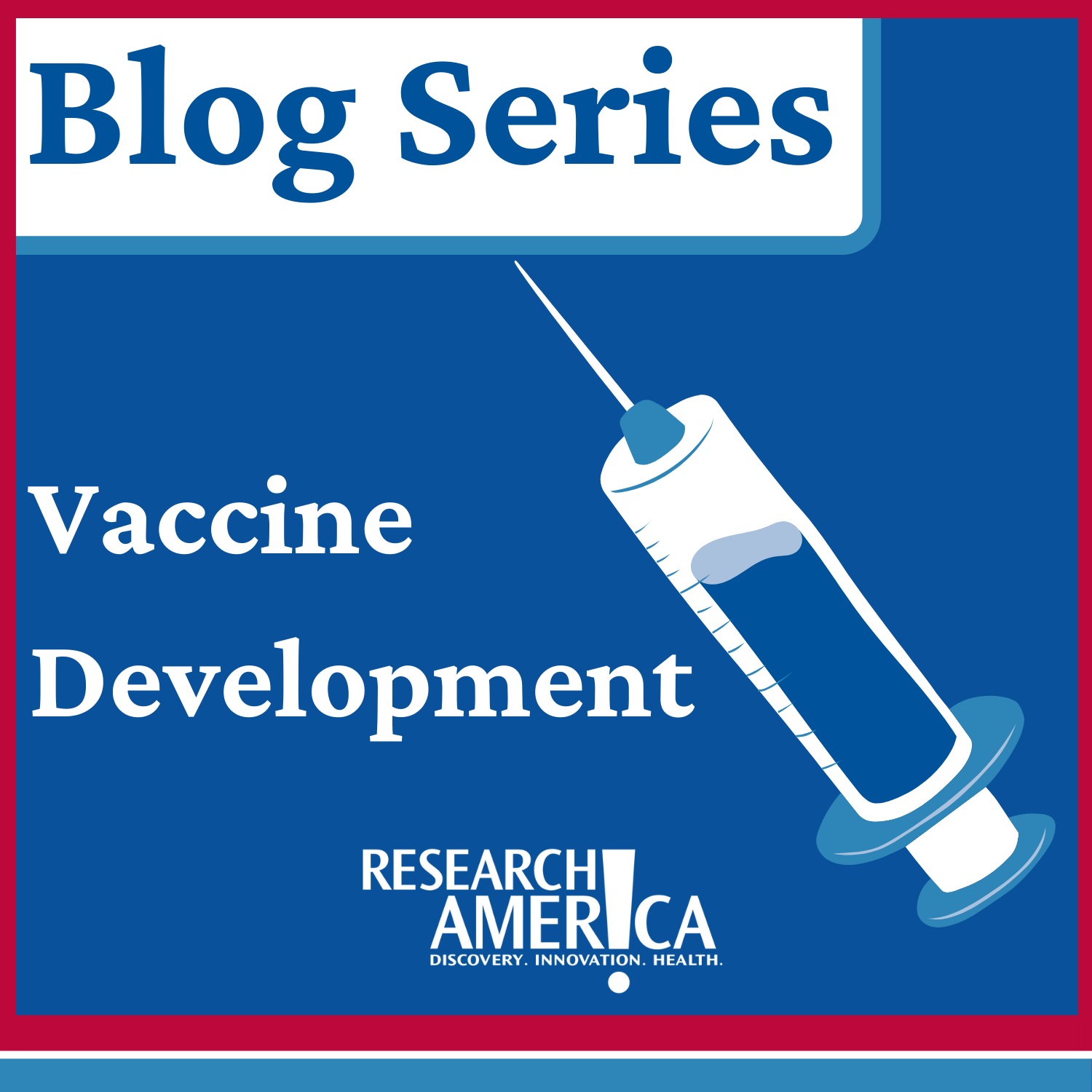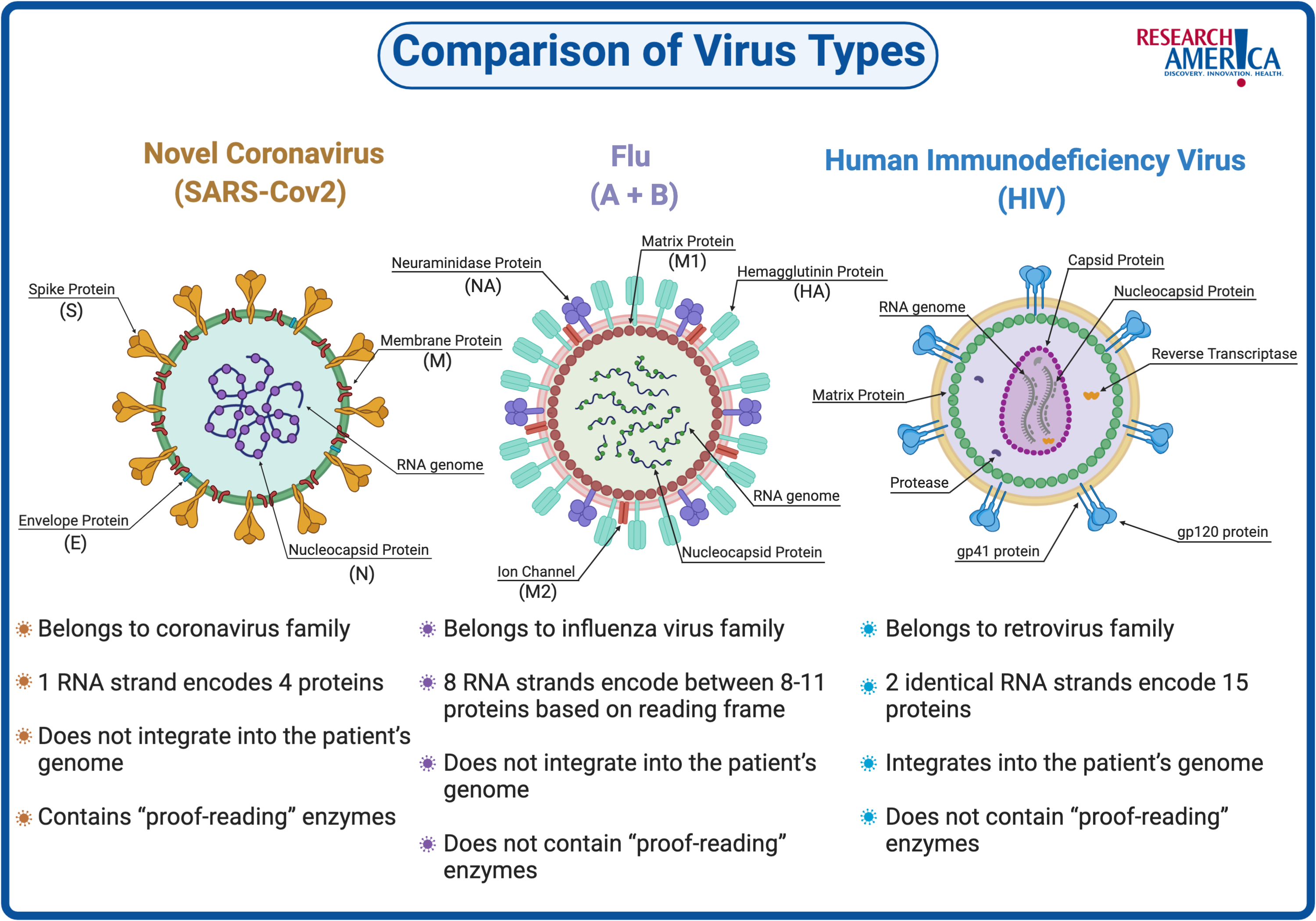How does the type of virus affect vaccine development?

Two earlier posts in this series explored what is a virus and what is a vaccine as well as the types of vaccines under development. As with the type of vaccine, the type of virus is as important when developing a vaccine. You might ask: Why do we need a new flu shot every year? Why isn’t there a vaccine for HIV? How do these issues translate to the new COVID-19 vaccine? Excellent questions all, that are answered by understanding the differences between viruses.
Influenza, the virus which causes the flu, has a genome made of eight independent segments. The eight segments in one strain of the flu can easily mix with the segments in other strains of the flu, creating what is called a “shift” in the genome.12 The influenza genome is also prone to making mistakes while replicating, leading to what is known as “drift”.12 Each time the flu genome “shifts” and “drifts” a new strain appears, causing your body to relearn what this strain looks like in order to gain immunity. Scientists have studied “shift” and “drift” in order to predict the most prevalent flu strains for the coming year and develop the vaccine accordingly.13
HIV is a retrovirus, meaning once infected, the virus inserts a copy of its genome into the patient’s DNA making it nearly impossible to eliminate. While HIV is active in a patient’s cells, it replicates quickly and is highly prone to errors (even more so than the flu).14 HIV also specifically infects immune cells and can disappear into a cell to avoid detection by other functional immune cells.15 This combination of the virus characteristics is why there is still no vaccine for HIV, though scientists are investigating innovative strategies.
SARS-CoV2 has only one subunit in its genome, and it has a key protein that corrects many of the errors which can occur during replication, known as a “proof-reading” enzyme. What does this mean for us? It means that the SARS-CoV2 we are facing today is unlikely to “shift” or “drift” over time to the same extent as influenza.16 This does not mean that SARS-CoV2 could not change over time, just that it is likely to be slower than the flu or HIV. SARS-CoV2 also is not a retrovirus meaning it cannot permanently integrate within the patient’s genome. While we don’t yet know everything about SARS-CoV2, what we do know tells scientists that, in time, it is likely we will find an effective vaccine that will eliminate the virus.





